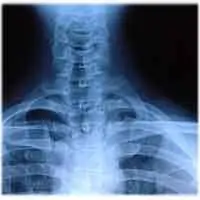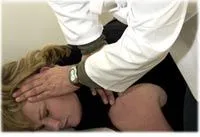While visiting a chiropractor is similar to visiting other healthcare providers, it does have some unique elements. You will likely find the office setting and intake procedures quite familiar, but many notice the distinctive appearance of the Chiropractic treatment table. These tables are often quite elaborate to allow specific positioning and movement during spinal adjustments and thus assist the chiropractic treatment.
A typical visit to a chiropractor includes an initial intake, physical exam, treatment, and follow-up plan.
What happens during the intake?
An initial chiropractic consultation is very similar to that of a standard medical intake. You will likely complete a health questionnaire and answer questions about your health history. Typically the chiropractor asks you to indicate where you are experiencing discomfort by marking the areas on a drawing of the human body.
What happens during the physical exam?

Most often, a chiropractor will take X-rays of your spine prior to treatment. The purpose of the X-rays is to study the condition of the bony anatomy and soft tissues. It also helps the chiropractor understand the extent of wear, any anomalies in your spine, and other factors that will guide the development of the treatment plan.
The physical exam typically includes a variety of assessments, such as range of motion tests, palpation, reflex testing, muscle strength comparisons, and neurological and orthopedic tests focused on the main complaint.
What goes into a treatment plan?
Following the assessments, the chiropractor will develop a treatment plan that takes into account:
- The extent of your injury or irritation
- Your general health
- The condition of your spine as affected by age and previous injury
- What your goals are – this is most important item

In initial consultations, your chiropractor will tell you the status of your condition and recommend an approach to care. Ask questions. As in any professional-patient relationship, trust and mutual understanding are vitally important.
What is a typical treatment?
“Adjustments” are usually the central part of chiropractic treatment. The chiropractic adjustment is a therapeutic manipulation that uses controlled force, leverage, direction, amplitude, and velocity directed at specific joints. In other words, an adjustment involves a lot more than simply opening up a joint.

When being treated for a complaint such as back or neck pain, you will most likely receive a series of adjustments, separated by either a day or a few days, to incrementally reduce the irritation and improve normal function. This might continue for several weeks, usually diminishing in frequency.
If you can’t tolerate the manual adjustments, you may instead receive mild or non-force techniques.
Adjustments are often accompanied by non-manual therapies such as application of heat or ice, electrical stimulation, orthotic supports for your shoes, rehabilitative exercise, counseling about diet, weight loss, and other lifestyle factors, and nutritional supplements.
